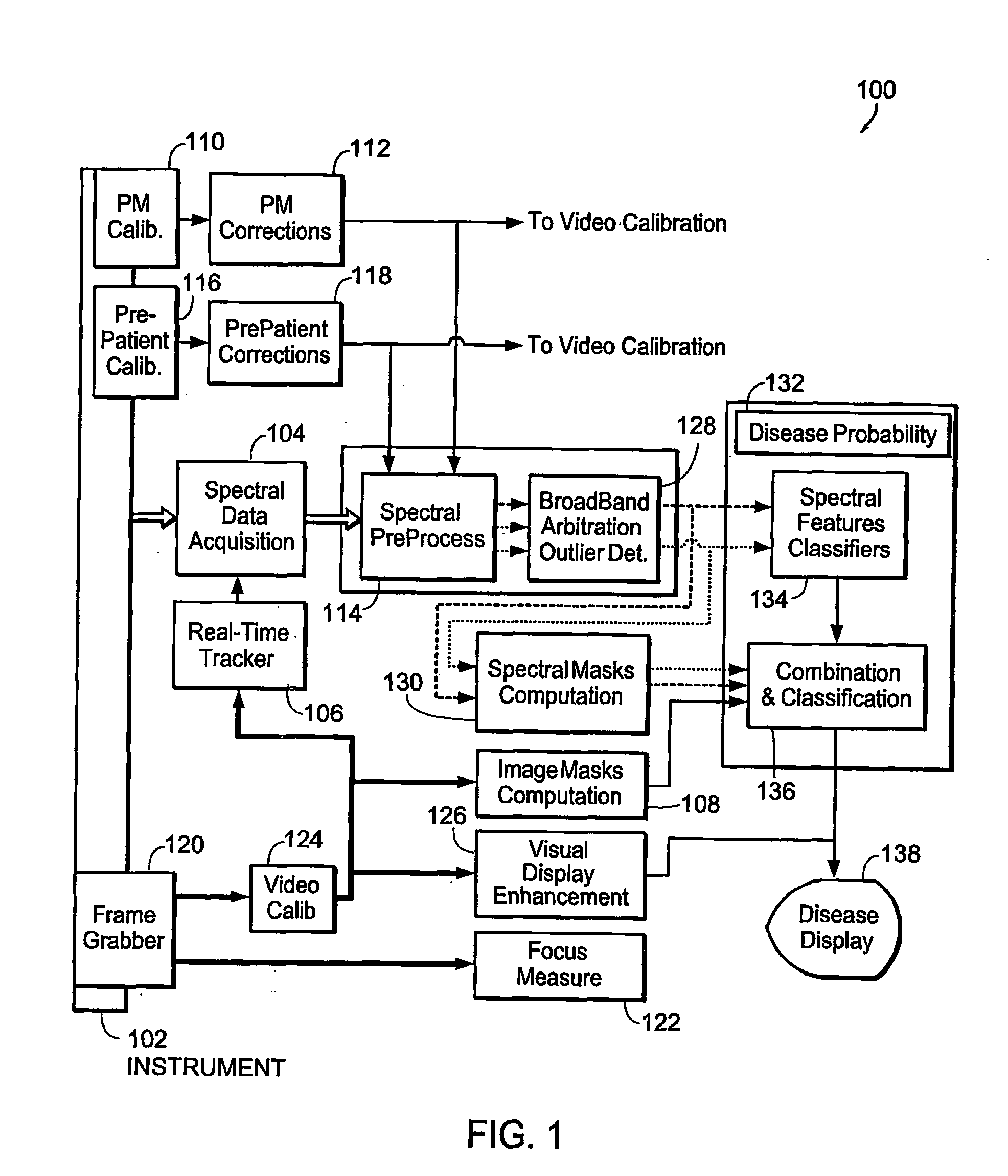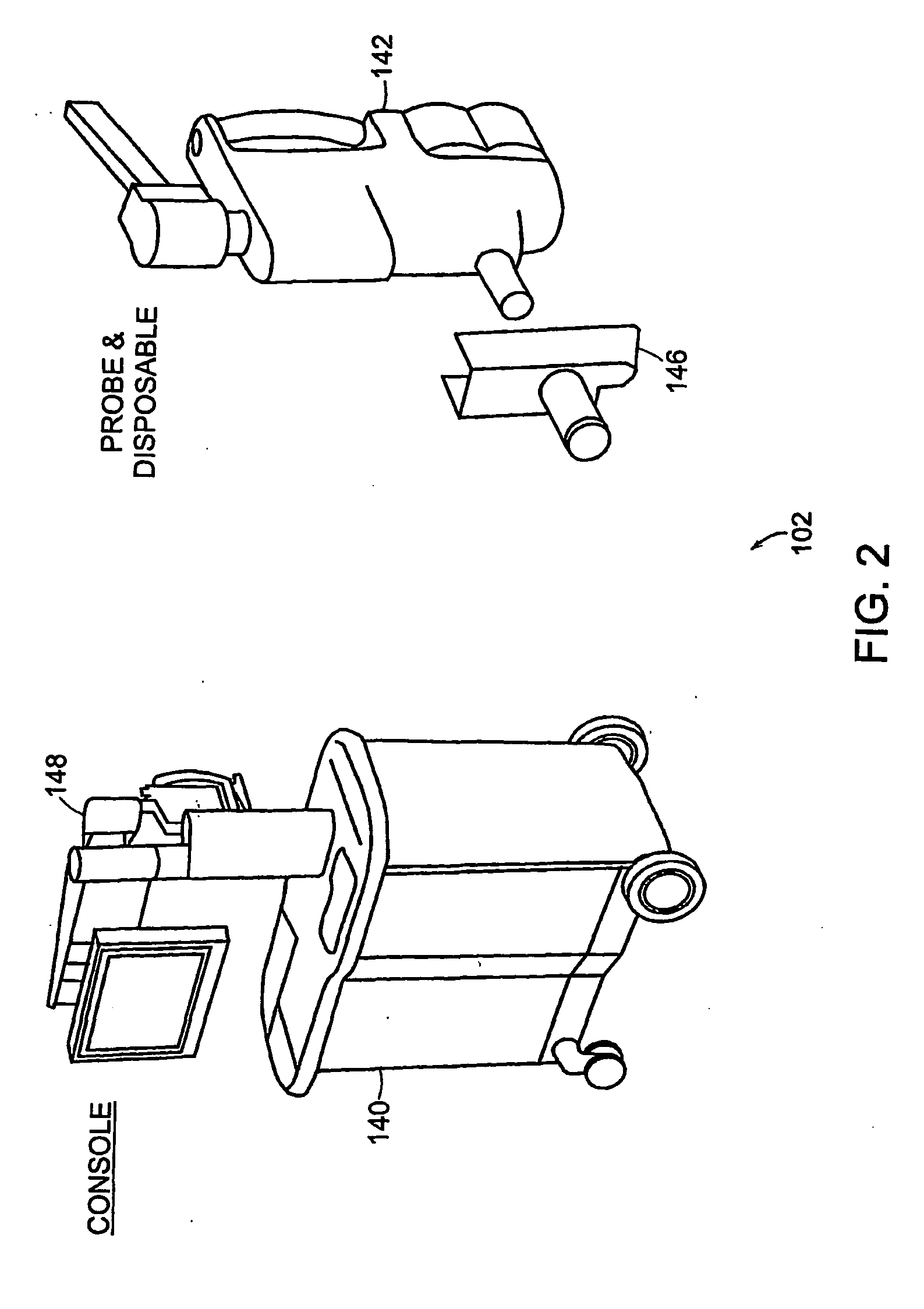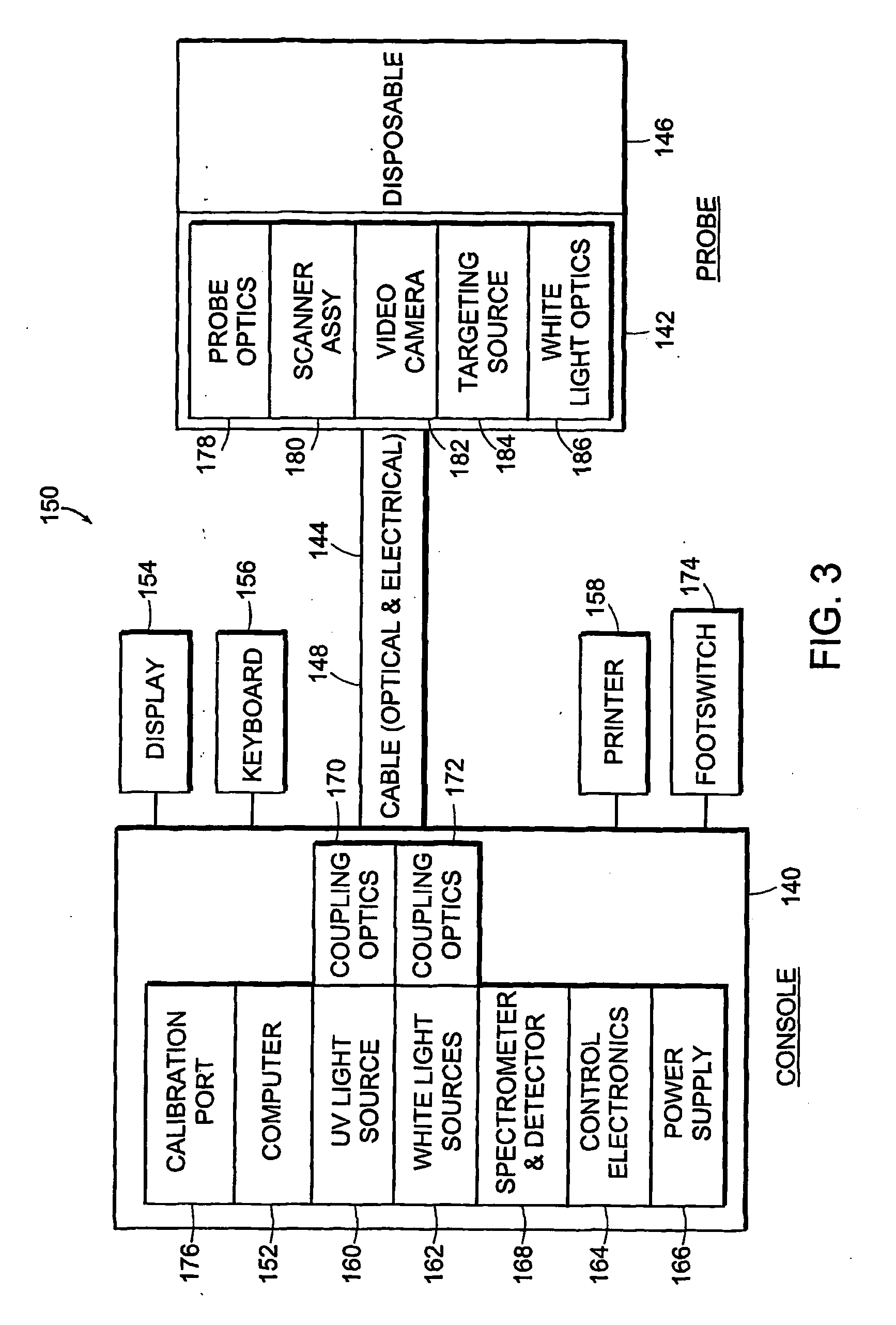Systems for identifying, displaying, marking, and treating suspect regions of tissue
a tissue sample and suspect technology, applied in the field of tissue sample suspect identification, display, marking and treatment, can solve the problems of indeterminate diagnosis, insufficient colposcopic technique, insufficient direct visual observation alone, etc., and achieve the effect of accurate identification and localization of neoplasia
- Summary
- Abstract
- Description
- Claims
- Application Information
AI Technical Summary
Benefits of technology
Problems solved by technology
Method used
Image
Examples
Embodiment Construction
[0181] The invention provides systems and methods for obtaining spectral data and image data from a tissue sample, for processing the data, and for using the data to diagnose, mark, and / or treat suspect regions of the tissue sample. Methods of the invention include obtaining data from a tissue sample, determining which data are of diagnostic value, processing the useful data to obtain a prediction of disease state, and displaying the results in a meaningful way. In one embodiment, spectral data and image data are obtained from a tissue sample and are used to create a diagnostic map of the tissue sample indicating regions in which there is a high probability of disease. The diagnostic map is used to mark and / or treat suspect regions of tissue.
[0182] The systems and methods of the invention can be used to perform an examination of in situ and / or in-vivo tissue. The invention provides for the identification of suspect regions of tissue, which are then further analyzed, excised, and / or...
PUM
| Property | Measurement | Unit |
|---|---|---|
| optical signal detection | aaaaa | aaaaa |
| real-time colposcopic | aaaaa | aaaaa |
| photosensitive | aaaaa | aaaaa |
Abstract
Description
Claims
Application Information
 Login to View More
Login to View More - R&D
- Intellectual Property
- Life Sciences
- Materials
- Tech Scout
- Unparalleled Data Quality
- Higher Quality Content
- 60% Fewer Hallucinations
Browse by: Latest US Patents, China's latest patents, Technical Efficacy Thesaurus, Application Domain, Technology Topic, Popular Technical Reports.
© 2025 PatSnap. All rights reserved.Legal|Privacy policy|Modern Slavery Act Transparency Statement|Sitemap|About US| Contact US: help@patsnap.com



